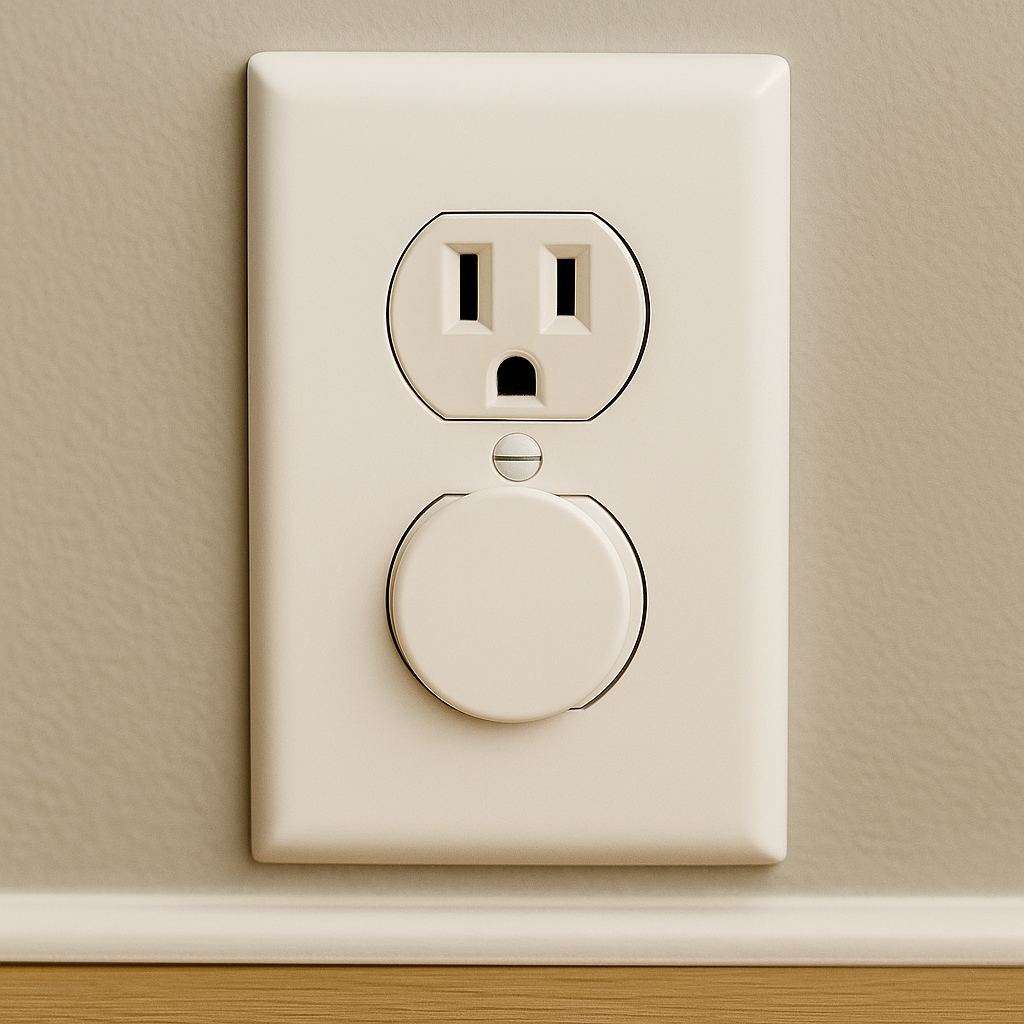What to Do If Your Outlet Stops Working | C.A.S.E. Electrify
Introduction
Nothing disrupts your day faster than plugging in a lamp or coffee maker and finding that familiar outlet simply won’t spit out power. A dead receptacle can leave critical appliances offline, interfere with your home office setup, or even put safety devices like alarms out of commission. Yet before you scramble for a service call, most outlet failures can be diagnosed and often resolved in minutes. In this in-depth guide, we’ll walk you through each logical troubleshooting step: confirming it isn’t your device, tracing the problem through adjacent outlets, resetting ground-fault and arc-fault protections, and methodically inspecting your breaker panel. You’ll learn vital safety checks—using non-contact voltage testers and always cutting power first—and discover exactly when a flicker of doubt means you should stop DIY work and reach for a professional. By arming yourself with these techniques, you’ll regain power quickly, avoid needless service fees, and keep your home’s electrical system both safe and compliant.
Table of Contents
- Test Your Device Thoroughly
- Trace the Circuit by Checking Adjacent Outlets
- Locate and Reset Any GFCI or AFCI Protection
- Examine the Circuit Breaker for Trips or Weakness
- Safely Inspect and Repair the Outlet Itself
- Know When to Call a Licensed Electrician
- Conclusion
- Helpful Links
- FAQs
Test Your Device Thoroughly
Before blaming the outlet, eliminate the possibility that your appliance or its power cord is at fault. First, unplug the device and plug it into a proven working outlet elsewhere in your home. If it still won’t power on, inspect the cord for kinks, cuts, or exposed wires and try wiggling it gently while plugged in. Next, swap in a completely different, known-good device—like a lamp, phone charger, or radio—into the suspect outlet. If this second device lights up or charges normally, you’ve confirmed the outlet is delivering power and the original appliance likely has an internal fault, a broken plug, or a blown fuse that needs repair or replacement.
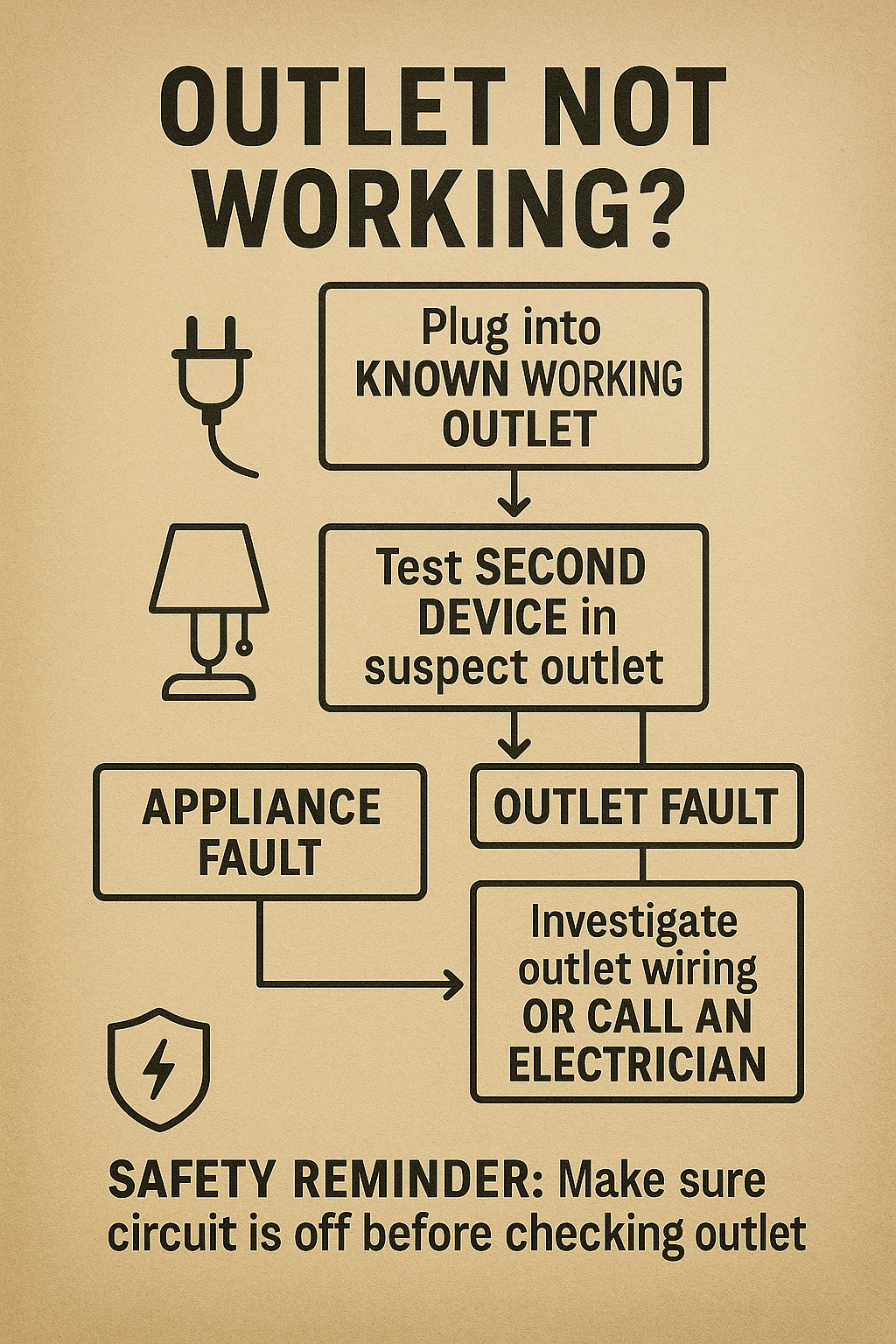
Trace the Circuit by Checking Adjacent Outlets
Residential outlets are often wired “downstream” in a chain on the same branch circuit. To see if the fault is isolated or circuit-wide, move your working test device to the nearest outlet above and below the dead one—both on the same wall and, if possible, around corners in the same area (kitchen counter outlets often daisy-chain). If those receptacles also show no power, you’re dealing with a branch failure. This pattern hints at a shared protective device (GFCI/AFCI) or wiring fault farther back in the loop rather than a single bad receptacle.
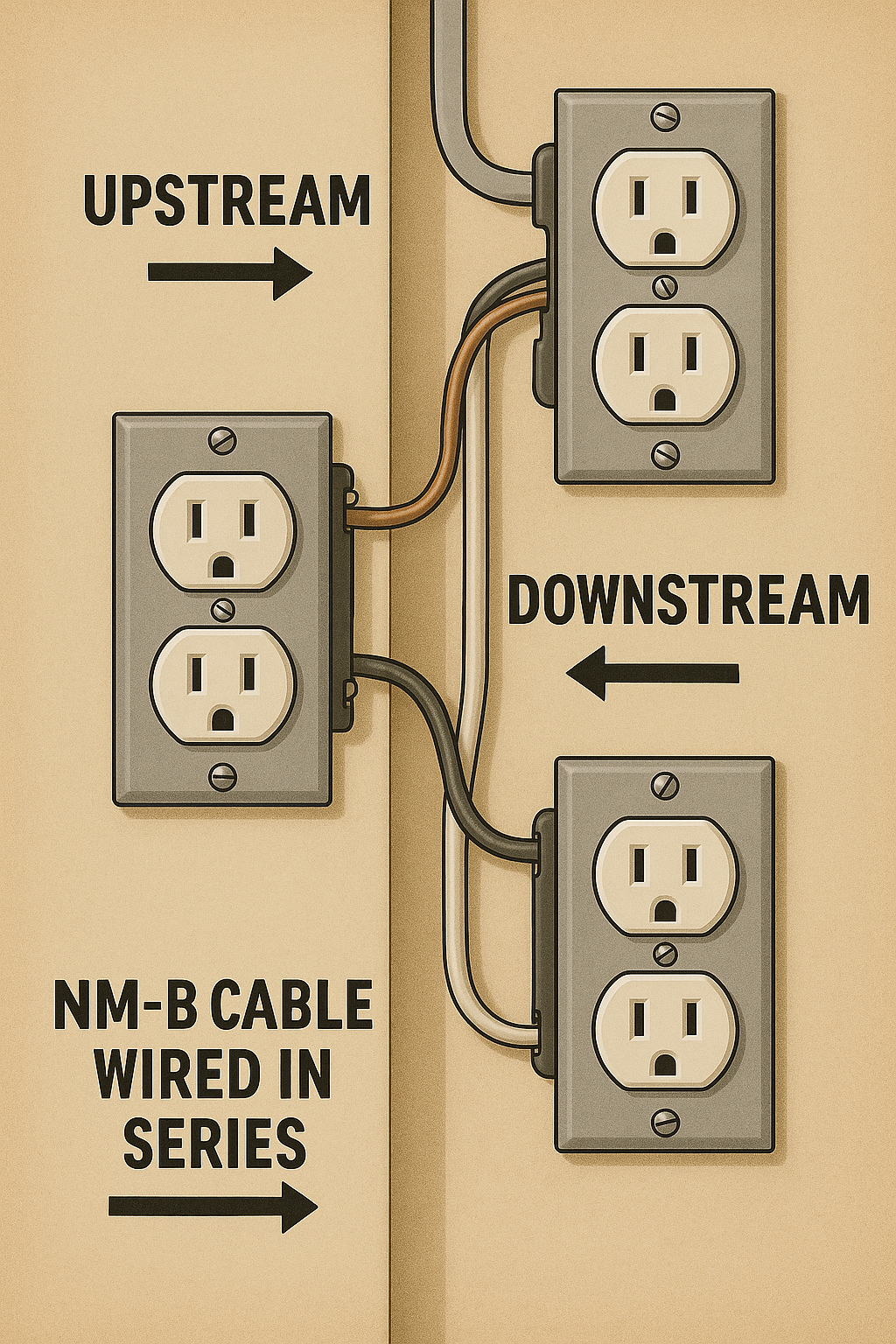
Locate and Reset Any GFCI or AFCI Protection
Building codes require GFCI outlets in moisture-prone areas (bathrooms, kitchens, garages, outdoors) and AFCI breakers or outlets in living spaces and bedrooms. A tripped GFCI won’t always pop the main breaker, so inspect every GFCI in the vicinity—look for outlets or button-style devices labeled “Test” and “Reset.” Firmly press “Reset” until you feel the click; if power returns downstream, that was your issue. Next, open your breaker panel and identify any ARC-fault circuit interrupter (AFCI) breakers (they often have a test button and a distinctive yellow or red label). Switch any tripped AFCI fully OFF, wait a second, then switch it back ON. If resetting either device restores your outlet, you’ve cleared the safety trip—if it trips again immediately, there’s still a fault on that circuit.
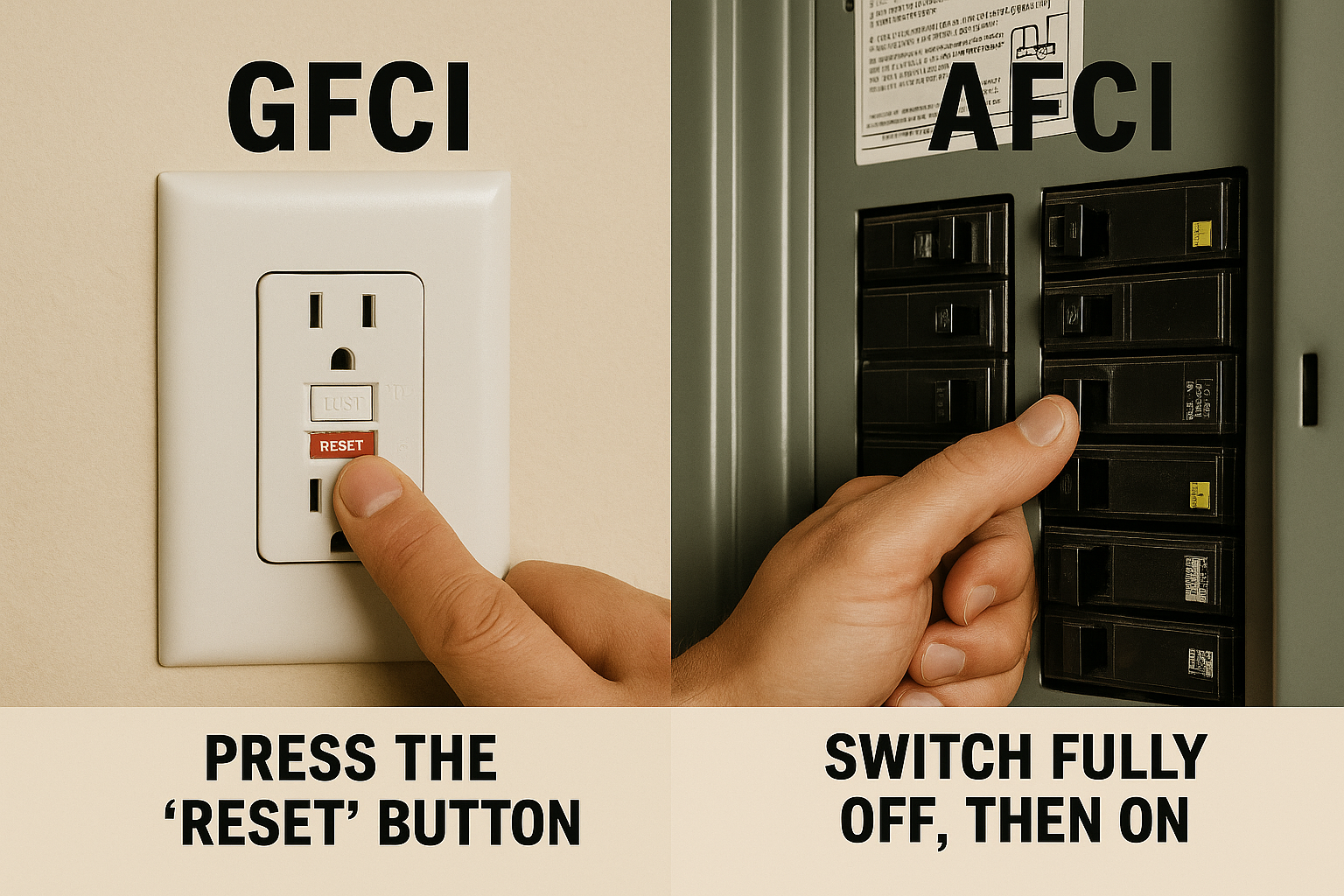
Examine the Circuit Breaker for Trips or Weakness
With the panel door open and lights on in the room, scan for any breaker handles sitting between the ON and OFF positions—that’s the telltale sign of a trip. To reset, push the handle firmly to OFF until it clicks, then flip it back to ON. If it stays on, test your outlet again. But if it immediately trips again under no load, you’re facing a persistent short-circuit, ground-fault, or heavy overload. Do not try to force the breaker to stay on—leave it OFF, unplug any loads on that circuit, and proceed to a professional inspection.
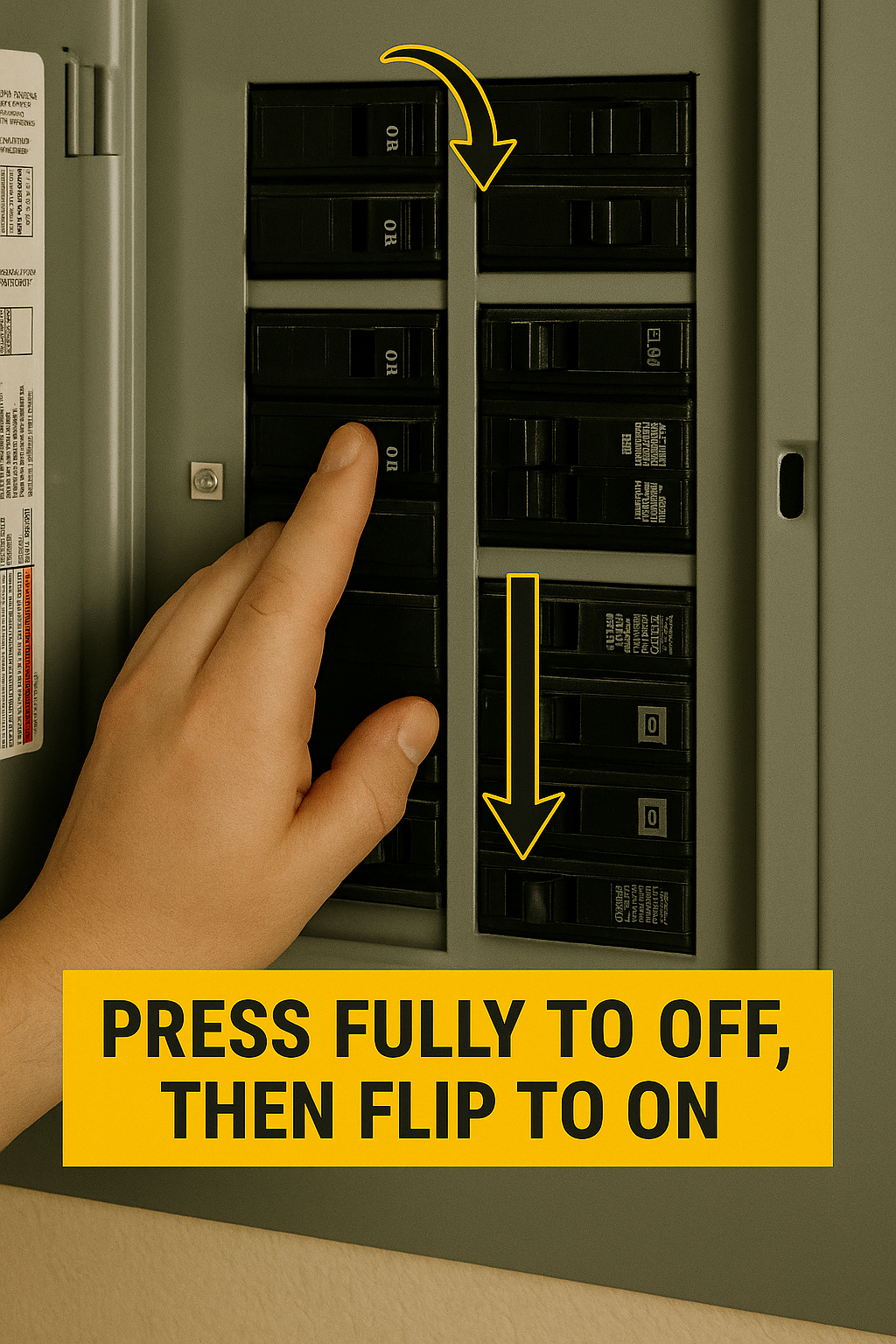
Safely Inspect and Repair the Outlet Itself
Warning: Never work on live wiring. Turn the breaker feeding this outlet to OFF, and verify zero voltage with a non-contact tester. Remove the faceplate and outlet mounting screws, then gently pull the receptacle halfway from the wall box. Look for loose or back-wired connections: side-screw terminals should be snug, and back-clamped wires should not slip out when you tug them gently. Inspect insulation for browning, melting, or arcing marks. If you find loose wires, tighten the terminal screws to manufacturer torque specs (usually 14 in-lb). If the plastic body is cracked or terminals are burnt, replace the entire receptacle with a new, UL-listed device of the same amperage rating (15 A or 20 A). Re-mount, restore power, and test.
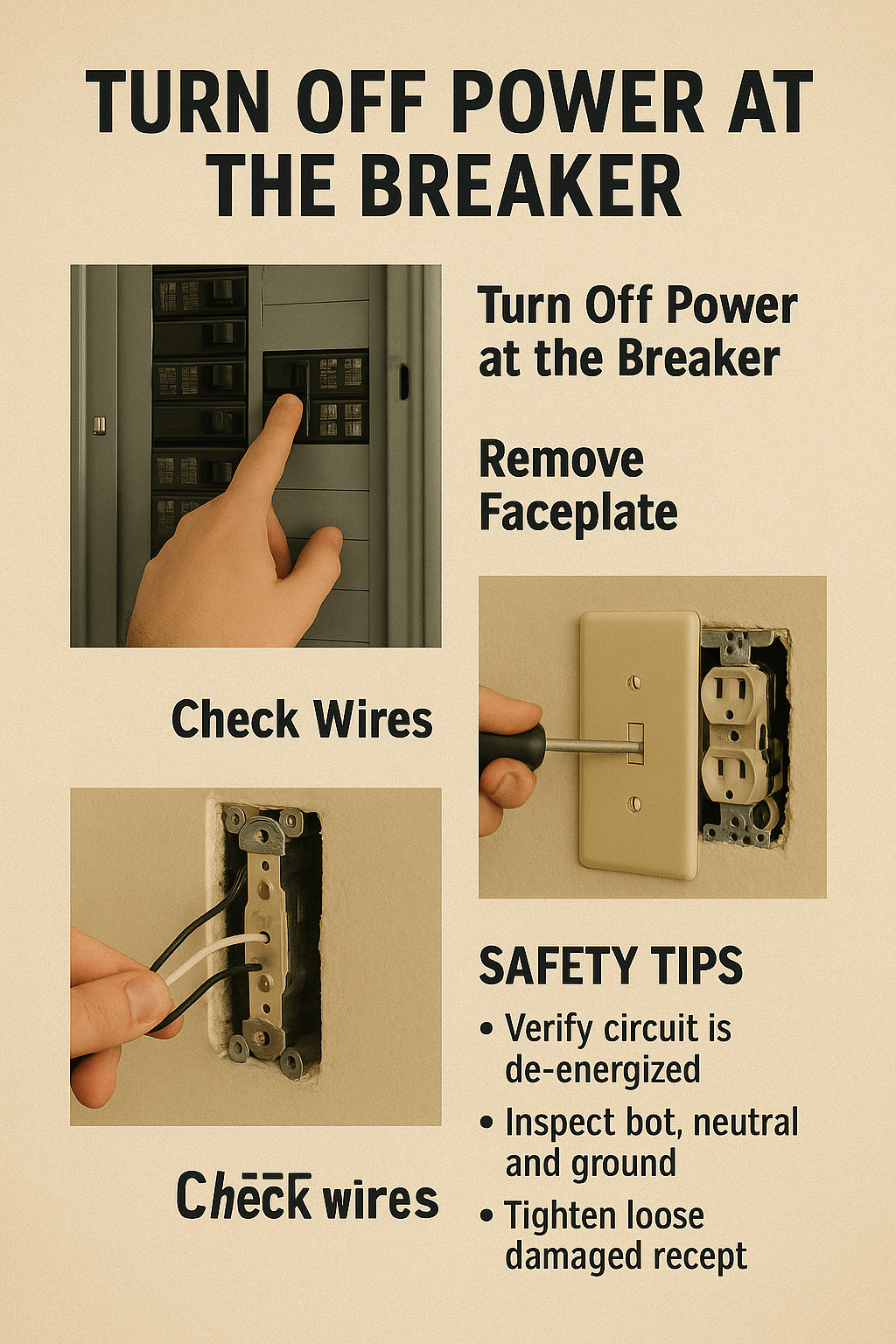
Know When to Call a Licensed Electrician
If, after all these steps, the outlet remains dead—or if you encounter any of the following—you’ve reached the limit of safe DIY work:
- Burned or charred wires, indicating arcing or overheating
- Breakers that won’t reset or trips that recur instantly
- GFCI/AFCIs that trip repeatedly with nothing plugged in
- Corroded terminals inside the outlet or panel
- Any uncertainty about working inside a live panel or junction box
At that point, contact C.A.S.E. Contracting Inc. for a full diagnostic and repair. Our licensed, insured electricians will trace hidden faults, replace or reroute compromised wiring, and ensure your system meets current code and safety standards. Call (530) 277-0917 or submit a service request through our website for prompt, professional assistance.

Conclusion
A non-working outlet doesn’t always spell disaster—often it’s a simple device fault, a downstream GFCI trip, or a loose wire that you can safely resolve yourself with the steps above. By systematically testing your appliance, tracing the circuit through adjacent receptacles, resetting GFCI/AFCI devices, inspecting your breaker panel, and—and finally—opening the outlet to tighten or replace worn components, you’ll restore power in the vast majority of cases without needing to call for help.
That said, when you encounter stubborn breaker trips, burnt or corroded terminals, repeated GFCI/AFCI trips, or anything that makes you hesitate about working near live conductors, it’s time to bring in the experts. At C.A.S.E. Contracting Inc., we’ve been the go-to, family-owned electrical contractor for homeowners and businesses across Grass Valley, Nevada City, North Auburn, Truckee, Downieville, and Penn Valley, CA since 1984. Our licensed and insured team handles everything from outlet and panel repairs to complete rewiring, generator installations, EV charger setups, lighting design, and comprehensive troubleshooting. We’re available Monday through Friday, 7 am – 10 pm for both scheduled service and emergency response.
Give us a call at (530) 277-0917, email casecontractinginc@gmail.com, or visit our website to submit a service request. With C.A.S.E. on the job, you’ll know that any outlet—or larger electrical challenge—in your home will be diagnosed accurately, repaired to code, and backed by decades of local expertise.
Helpful Links:
Power Outlet Not Working – Easy Fix Troubleshooting Dead Outlets
Fix Electric POWER OUTLET No Longer Working
FAQs
1. Why didn’t my breaker trip if the outlet died?
Many GFCI outlets protect downstream receptacles without tripping the breaker. Resetting the GFCI or AFCI often restores power even if the main breaker remains in the
ON position.
2. Is it safe to replace an outlet myself?
Yes, for a standard non-protected receptacle: switch off its breaker, verify no voltage, then swap in a new outlet. If you encounter damaged wiring, burnt components, or a GFCI/AFCI device, call a professional.
3. What causes an outlet to go loose?
Repeated plugging and unplugging can work screws or clamp-back wiring loose, leading to intermittent power or arcing. Regular checks and hand-tightening can prevent this.
4. How do I identify which breaker feeds my outlet?
With all breakers ON, turn one OFF at a time and test the outlet until it loses power. Label that breaker inside your panel for quick future reference.
5. Why does resetting the outlet trip the breaker?
A short circuit, ground fault, or overload exists on that circuit. Unplug all devices and reset again; if it still trips, leave it OFF and call an electrician.
6. How often should I test GFCI outlets?
Press the
Test button every three months to verify operation, then hit
Reset to restore power—ensuring reliable ground-fault protection.



